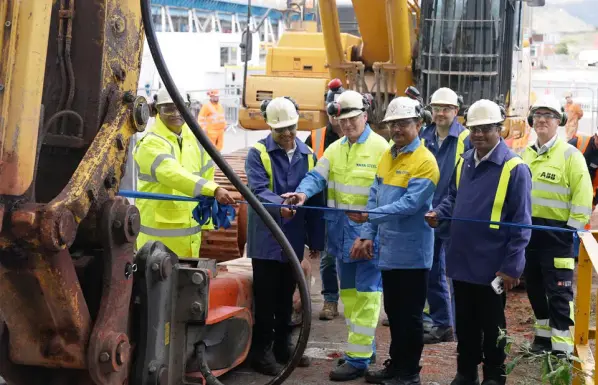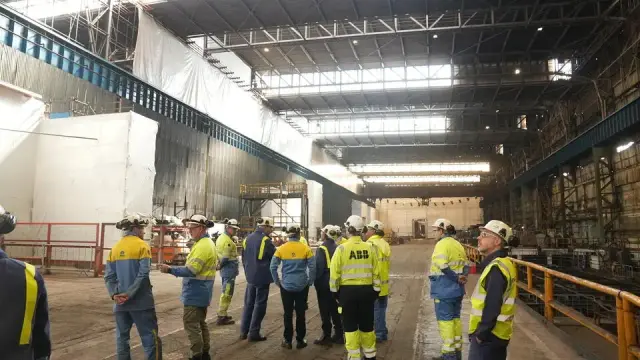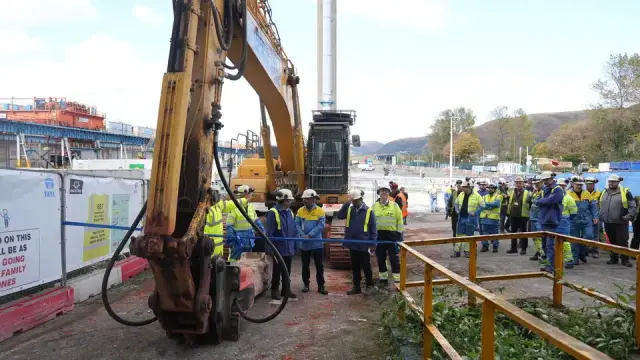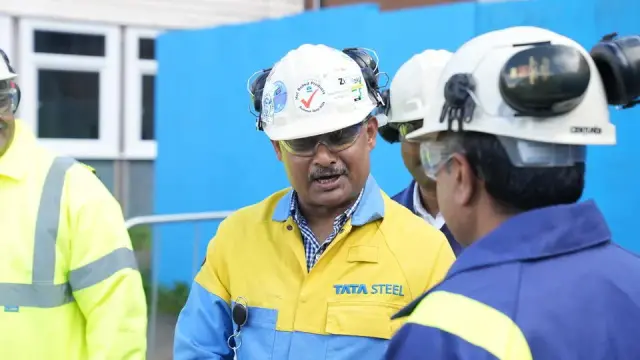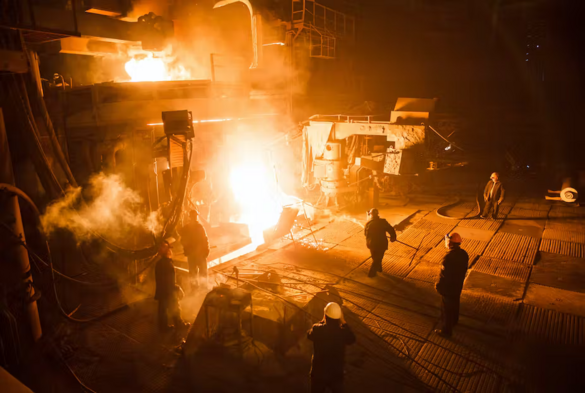Tata Steel begins new project at Port Talbot in £1.25bn green plan
The company says the state‑of‑the‑art facility will replace ageing equipment and prepare hot rolled steel for downstream processes. The line cleans and treats steel before it is cold rolled and coated, supplying other Tata operations at Trostre, Llanwern and Shotton.
A turning point for Tata’s operations
Mills Programme Manager Andrew McGregor called the groundbreaking a turning point.
“This is a fundamental asset that is required for us to have a sustainable UK business going forward,” he said.
“Our current assets are at the end of their operational life, and without this replacement pickle line, we wouldn’t be able to process many of the steels required for our downstream businesses and directly for our customers.”
McGregor also praised the project team for months of preparatory work, from diverting cables to clearing the bay, which has allowed demolition crews to move in.
Tata Steel executives, including Pramod Agrawal and Rajesh Nair, inspect the cleared bay inside Port Talbot steelworks where the new pickle line will be built.(Image: Tata Steel)One year after the blast furnaces fell silent
The investment comes less than a year after the closure of Port Talbot’s blast furnaces, which brought significant job losses and uncertainty for the town. Tata insists the pickle line is a sign of renewal, but unions and community leaders have warned that the transition to electric arc furnace production will still mean a smaller workforce.
The new pickle line is scheduled to be in place by 2026, ahead of the planned commissioning of a 3.2 million‑tonne electric arc furnace in 2027/28. Tata says the EAF will melt UK‑sourced scrap steel and form the centrepiece of its decarbonisation strategy.
Project leaders and contractors gather in hi‑vis at Port Talbot steelworks as demolition begins for the new pickle line, alongside heavy machinery on site.(Image: Tata Steel)Local firms in the frame
Construction of the pickle line is being led by Sir Robert McAlpine, with regional firms including Darlow Lloyd & Sons, Andrew Scott Ltd and Systems Group also involved.
At the official ceremony, Tata Steel board member Pramod Agrawal cut the ribbon alongside senior executives.
Pramod Agrawal, Tata Steel board member, during his visit to Port Talbot to mark the start of the new pickle line project.(Image: Tata Steel)Optimism tempered by caution
For Port Talbot, the start of work on the pickle line is another reminder of the site’s changing role. Neath Port Talbot Council leader Steve Hunt recently described the past year as “seismic” for the town, but said projects such as the pickle line and the Celtic Freeport offered reasons for optimism.
Campaigners, however, remain cautious. They argue that while new investment is welcome, the loss of traditional steelmaking has left deep scars and that promises of a “green future” must be matched by secure jobs and long‑term commitments.
Related articles
- One year on: Council leader hails resilience after Port Talbot blast furnace closure
Steve Hunt reflects on a “seismic change” for the town and the community’s determination to adapt.
- Tata Steel signs contract for green steelmaking technology
Deal paves the way for a new electric arc furnace in Port Talbot, cutting emissions by 90%.
- Port Talbot communities show resilience amid Tata Steel transition, but financial pressures loom
Survey reveals strong community spirit despite job losses, with households bracing for rising costs.
#AndrewScottLtd #blastFurnace #DarlowLloydSons #electricArcFurnace #GreenSteelmaking #industry #manufacturing #PickleLine #PortTalbot #PortTalbotSteelworks #PramodAgrawal #SirRobertMcAlpine #SystemsGroup #TataSteel
